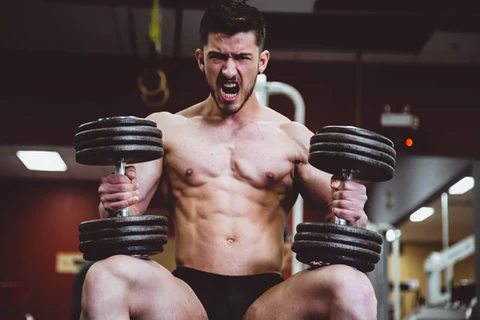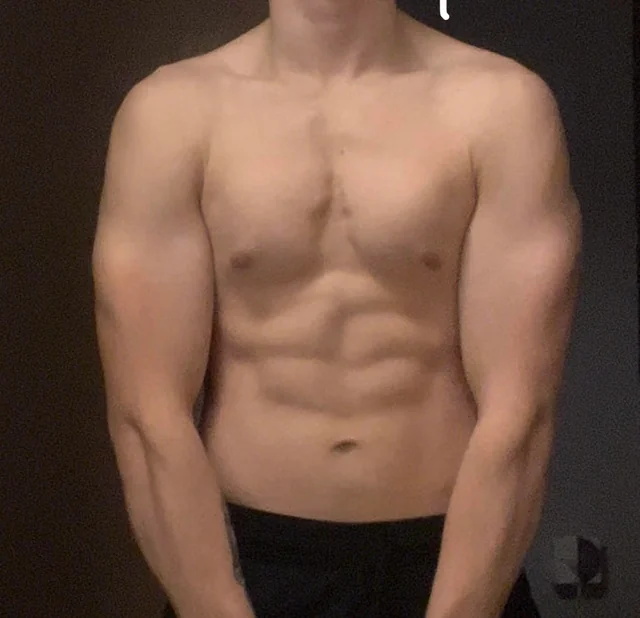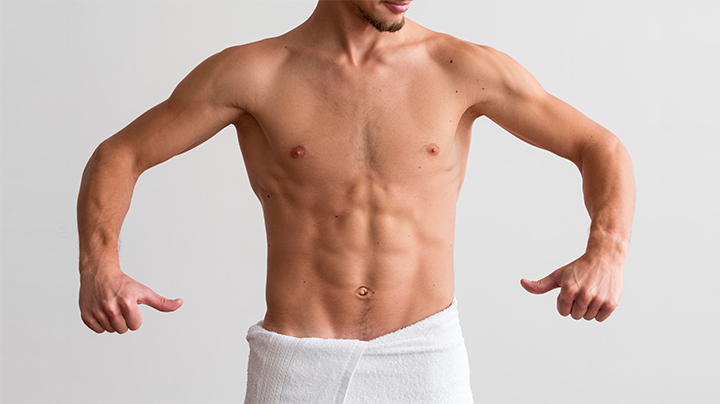Are you frustrated by your chest development despite putting in the effort? Genetics plays a crucial role in determining muscle size, including your pecs. While you can’t change your genetic makeup, you can still make significant improvements with the right approach. As an experienced fitness trainer, I’ve seen many individuals overcome genetic limitations to build impressive chests. In this post, we’ll share practical tips and effective exercises to help you conquer your bad chest genetics and achieve your fitness goals.

Contents
What Are Genetics And What Does “Bad Genetics” Mean?
Genetics is the study of genes, heredity, and genetic variation in living organisms. It is a field of biology but intersects with many other life sciences and is an essential foundation for understanding how traits are passed from parents to offspring. Genes, which are made up of DNA, act as instructions to make molecules called proteins. These proteins perform various functions in the body, leading to the development of traits or characteristics such as eye color, height, and susceptibility to certain diseases.
The term “bad genetics” isn’t a precise scientific term but is often used colloquially to refer to a person’s genetic predisposition to have traits considered undesirable or to be at higher risk for certain health problems. This can include a wide range of issues such as a predisposition to certain chronic diseases (like heart disease, diabetes, or cancer), physical traits (such as difficulty building muscle or gaining fat easily), or even traits affecting lifespan.
However, it’s important to note that genetics is just one part of the equation. Environmental factors, lifestyle choices, and random biological processes also significantly influence health and physical traits. The idea of “bad genetics” oversimplifies the complex interaction between genes and the environment. While someone may have a genetic predisposition to certain conditions, lifestyle choices, and preventative measures can often mitigate these risks significantly.
Common Issues Related to Bad Chest Genetics
These issues are subjective and vary greatly from person to person, but some common concerns include:

-
Underdeveloped Pectorals: Despite regular training, some individuals find it challenging to increase the size and strength of their chest muscles. This can be due to genetics influencing muscle fiber composition, hormonal levels, or how muscle mass is distributed across the body.
-
Asymmetry: It’s not uncommon for one side of the chest to develop differently than the other. This can be due to natural anatomical variations, differences in muscle strength or usage, or even injuries. While some asymmetry is normal, it can be more pronounced in some individuals.
-
Flat Chest: Some people may have a genetic predisposition towards a flatter chest, despite having a low body fat percentage and being physically fit. This can be due to the natural shape and insertion points of the pectoral muscles or the thickness of the muscle bellies.
-
Stubborn Fat Deposits: Even with a low overall body fat percentage, some individuals may struggle with stubborn fat deposits in the chest area. This can be particularly frustrating for those trying to achieve a more defined chest.
-
Pectus Excavatum or Pectus Carinatum: These are conditions where the sternum is either sunken into the chest (excavatum) or protrudes out (carinatum), which can affect the overall appearance of the chest. While these conditions are more related to the shape of the chest wall rather than the muscles themselves, they can influence how the chest looks and how satisfied an individual is with their chest development.
-
Difficulty in Achieving Desired Shape: Some individuals may find it challenging to develop the chest shape they desire, such as a square, rounded, or defined look, due to the way their muscles grow in response to training.
How To Fix Your Bad Chest Genetics?
Improving the development of the chest muscles, especially in the face of what might be considered “bad chest genetics,” involves a combination of targeted exercises, nutrition, and sometimes a reassessment of your overall training approach. Here are strategies to help enhance the appearance and strength of your chest muscles:

1. Optimize Your Training Regimen:
- Increase Training Volume: More sets and reps can stimulate muscle growth. Consider incorporating more chest-focused workouts into your routine.
- Variety of Exercises: Use a mix of exercises that target the chest from different angles and involve both the sternal and clavicular heads of the pectoralis major. Include barbell bench presses, incline and decline presses, dumbbell presses, push-ups, and cable flyes.
- Progressive Overload: Gradually increase the weight you lift over time to challenge your muscles and encourage growth.
- Mind-Muscle Connection: Focus on the contraction of the chest muscles during exercises to improve activation and efficiency.
2. Adjust Exercise Technique:
- Proper Form: Ensure you’re using the correct form to maximize muscle engagement and minimize the risk of injury.
- Pre-Exhaustion: Use isolation exercises like cable flyes or dumbbell flyes before compound movements (e.g., bench press) to fatigue the chest muscles, ensuring they work hard during the compound lifts.
3. Incorporate Recovery Periods:
- Rest and Recovery: Muscles need time to repair and grow. Ensure you’re not overtraining and that you’re giving your chest muscles adequate rest between intense workouts.
- Sleep: Quality sleep is crucial for muscle recovery and growth.
4. Nutrition and Supplementation:
- Protein Intake: Ensure you’re consuming enough protein to support muscle repair and growth.
- Caloric Surplus: For muscle building, a caloric surplus might be necessary. However, it should be a controlled surplus to minimize fat gain.
- Supplements: Consider supplements that support muscle growth, such as creatine, whey protein, and BCAAs, after consulting with a healthcare professional.
5. Patience and Consistency:
- Realistic Expectations: Understand that genetics do play a role in muscle shape and growth rate. Focus on progress and improvements over time.
- Consistency: Regular, consistent effort in training, nutrition, and recovery is key to overcoming genetic limitations.
6. Professional Guidance:
- Hire a Trainer: A knowledgeable personal trainer can tailor a workout program to your specific needs and help you make the most of your training.
- Medical or Physical Therapy Consultation: If structural issues like pectus excavatum significantly affect your chest’s appearance, consult a healthcare professional for potential treatments or corrective exercises.
Frequently Asked Questions:
How can I improve my chest despite bad genetics?
Tailored workout plans focusing on chest muscles, including bench presses and push-ups, can help maximize muscle development. Consistency, proper nutrition, ample rest, and seeking professional guidance are key factors in overcoming genetic limitations for optimal chest muscle growth.
What role does commitment play in chest development?
Commitment and effort are crucial in determining the outcome of chest development. Persistence, focus on progress, and adhering to a structured workout regimen are essential for maximizing muscle size and strength, irrespective of genetic predispositions.
Can genes affecting chest development be altered?
Genetics cannot be changed, but altering your training program can impact how your genes are expressed. Consistent training targeting chest muscles can help optimize muscle growth and strength potential, showcasing improvements even with genetic limitations.

Hello, I’m Ravindra. Over the years, I’ve immersed myself deeply into the world of fitness and health, transforming both my body and mind. Writing has allowed me to share my journey, insights, and expertise with those just starting out and seasoned fitness enthusiasts alike. Beyond just routines and diets, I believe in inspiring others to adopt a holistic approach to well-being.
